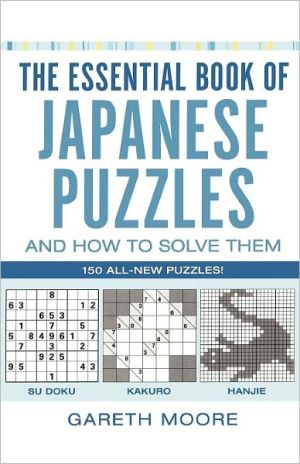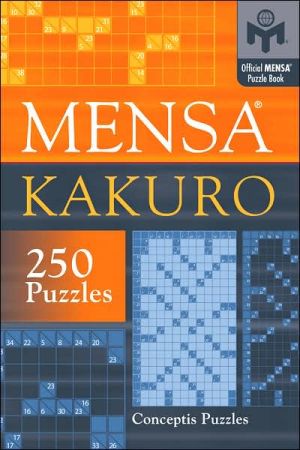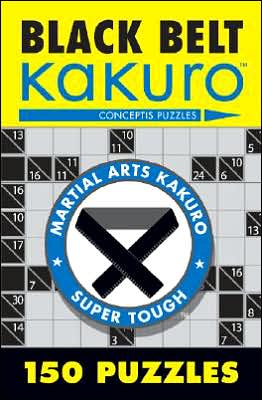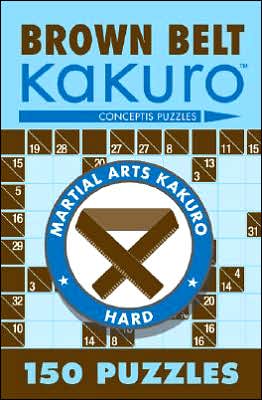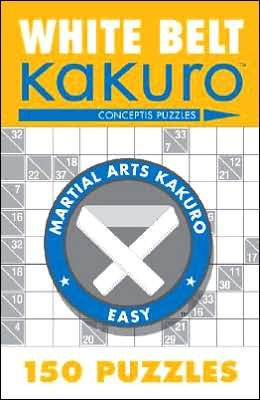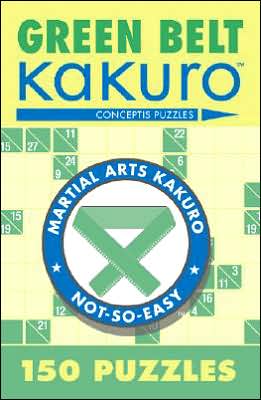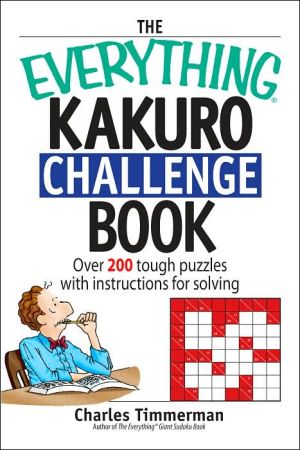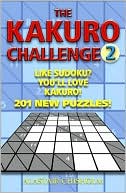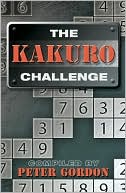The Essential Book of Japanese Puzzles and How to Solve Them
HOW TO PLAY SU DOKU, KAKURO AND HANJIE — AND SUCCEED!\ Su Doku — the logic puzzle that took the world by storm and shows no sign of stopping.\ Kakuro — a brain-teasing Japanese puzzle that for many is even more entertaining than Su Doku.\ Hanjie — the classic Japanese puzzle that uses logic to reveal a picture.\ The absorbing combination of numbers and logic makes the puzzles in this book completely addictive. With 150 all-new and unique Su Doku, Kakuro and Hanjie puzzles, of increasing...
Search in google:
HOW TO PLAY SU DOKU, KAKURO AND HANJIE — AND SUCCEED!Su Doku — the logic puzzle that took the world by storm and shows no sign of stopping.Kakuro — a brain-teasing Japanese puzzle that for many is even more entertaining than Su Doku.Hanjie — the classic Japanese puzzle that uses logic to reveal a picture.The absorbing combination of numbers and logic makes the puzzles in this book completely addictive. With 150 all-new and unique Su Doku, Kakuro and Hanjie puzzles, of increasing levels of difficulty, The Essential Book of Japanese Puzzles also contains full instructions to each game, along with hints, tips and strategic guides, as well as solutions. Su Doku, Kakuro, Hanjie — three great games in one great book.
Su Doku: Introduction\ If you haven't heard of Su Doku yet then you can't have picked up a newspaper or gone into a bookshop any time recently! It's a number-puzzle game that's simple to play and yet complex to master. Despite using numbers, it doesn't require any math at all — the only thing needed is a sprinkling of logic.\ The Su Doku grids in this book are all squares with nine columns and nine rows, as indeed are the vast majority of Su Doku puzzles elsewhere. Unlike some other sources of puzzles, however, they can all be solved without ever requiring any guesswork. Logical deduction from the numbers that are already in the grid is all that is ever needed. This makes the puzzles much more satisfying.\ So how do you play Su Doku? Easy! Those nine columns and nine rows need to be filled with nine different numbers, 1 to 9, and there is just one trivially simple rule: each number can only be used once per "region." And what is a region? That's easy too: a region is any single row, any single column, OR any of the nine individual 3x3 squares that are marked in the puzzle grid with a heavier line.\ An example row, column and 3x3 region are marked in this Su Doku puzzle:\ Look at the square labeled "a." The solution has to be "7" because it's the only place where it can fit on that row, given the restriction that all nine different digits have to be placed into each row.\ Similarly consider square "b." There's no "4" in this 3x3 region, so that must be the solution.\ There are various cunning strategies you can use to help you solve the puzzles in this book, but half the fun is working out what they are. One tip is worth passing on, however — if you get stuck then use a pencil to mark in which numbers can fit in each square. You might notice something new, such as a square where only one number can fit.\ Good luck! The puzzles in this book get harder as you progress through the section, so if you're finding it tough then try an earlier puzzle. All the solutions are at the back if you get really stuck — there is a unique solution to each puzzle so if yours differs, then you've gone wrong somewhere!\ Compilation copyright © 2005 by Michael O'Mara Books Limited\ Puzzles and solutions copyright © 2005 by Gareth Moore\ Hanjie: Introduction\ Hanjie is a fascinating Japanese picture puzzle that dates back to at least the eighteenth century. It consists of an empty grid that is filled in by following a few simple number clues, gradually revealing a concealed image — a kind of "painting by numbers." Just by finishing a puzzle you're rewarded with a stylized work of art!\ How to play\ Hanjie puzzles consist of a grid of empty white squares, with every row and column in the grid having an adjacent list of one or more numbers — these are the clues. (In this book, clues for horizontal rows are on the right of the grid, and clues for vertical columns are at the bottom.) Completing the puzzles involves nothing more complex than shading or coloring in the number of squares dictated by each row's or column's list of clues. The twist is that the clues only tell you how many squares to shade in on a line — it is up to you to work out where they go!\ A very simple example of a finished puzzle looks like this:\ Notice how the clue numbers match the filled squares — the two numbers "1, 1" on the first row show that there are two filled areas of length 1 on that row. On the final row a single "3" indicates that there is a single area of three consecutive filled squares on the row.\ The initial puzzle grid is empty, and looks like this (the letters against each row are just for the purposes of this description, however — you won't find them in the actual puzzles):\ The problem is therefore to work out where the filled-in squares go by reasoning logically from the number clues. None of the puzzles in this book ever require you to guess.\ Each puzzle only ever has one solution — so if your picture looks different from the one in the solutions then you've gone wrong somewhere!\ Solving the puzzle\ Let's look at the rows. We can solve row "a" straight away because it contains two areas of length "1." They can't touch, because if they did it would be just one area of length 2. So in order to fit both into the three squares available, the solution to the row must be:\ Row "c" is similar — there's only one place the "3" filled squares will fit:\ Row "b" can't be solved yet, however — there are three possible places that the single filled square could fit.\ We need to consider the column clues too:\ Columns "d" and "f" are already solved, so we can now try column "e." We have to fill in "2" continuous squares. These can't be the top two squares of the column because this would result in a column of three filled-in squares, not two (and would break the solution to row a), so the solution must be:\ All the row and column clues have now been satisfied so the puzzle is complete!\ Handy tips: Counting squares\ You can't see it in the example above, but in the real puzzles every fifth horizontal or vertical line is thicker than the other lines that make up the grid. This makes it much easier to count squares when placing long sequences, so use it to your advantage!\ Mark empty squares\ Marking empty squares is every bit as important as marking filled squares. By working out which squares must be empty you can often get further in working out which squares must be filled. For example, consider the following partially completed row, where the position of one of the three squares is known and has been indicated by shading:\ The three filled squares will only fit in two different positions, both of which leave the left-most two squares empty, so mark those with a dot or a cross or in some other easily identifiable way:\ This might not seem useful right away, but it's often very important when solving an intersecting row or column.\ Place partial fits\ Just like in the illustration above, where part of the solution to the number "3" has been placed, make sure you mark in the squares which must be filled or must be empty, even if you don't yet know the full solution to a clue.\ For example, consider the following row of five squares:\ The left-most place the "3" filled squares will fit is as follows:\ and the right-most place is:\ It therefore follows that wherever the three filled squares are placed, the center square will always be filled in, so we can fix it permanently:\ In general, if any clue number is greater than half the row or column length then you can be certain that at least one of the center squares can be filled in.\ About the puzzles\ In this book there are fifty puzzles of increasing width and height — as you proceed through each size, the puzzles get progressively harder. If you get completely stuck, check out the solutions at the back of the book.\ You won't, however, get stuck — or not too badly — if you persist, and on the way you will discover an absorbing logic game with a very satisfying result. Good luck!\ Compilation copyright © 2005 by Michael O'Mara Books Limited\ Puzzles and solutions copyright © 2005 by Gareth Moore
ContentsSu Doku: IntroductionSu Doku: 50 PuzzlesKakuro: IntroductionKakuro: 50 PuzzlesHanjie: IntroductionHanjie: 50 PuzzlesSu Doku SolutionsKakuro SolutionsHanjie Solutions
